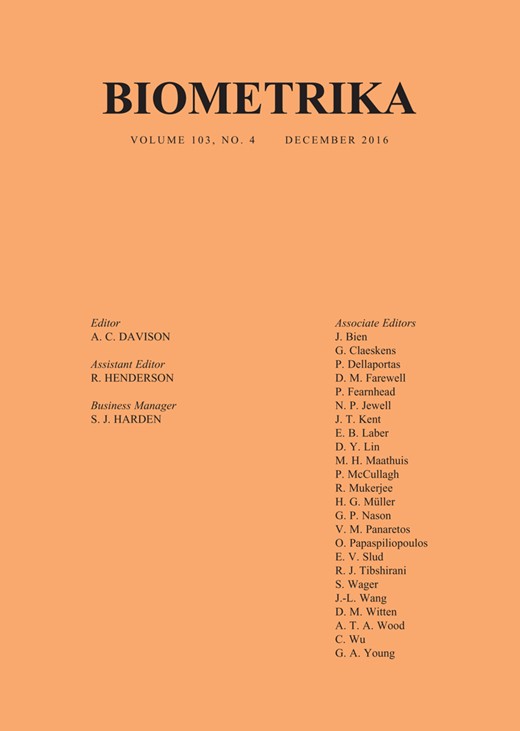-
Views
-
Cite
Cite
Wei Luo, Bing Li, Combining eigenvalues and variation of eigenvectors for order determination, Biometrika, Volume 103, Issue 4, December 2016, Pages 875–887, https://doi.org/10.1093/biomet/asw051
Close - Share Icon Share
In applying statistical methods such as principal component analysis, canonical correlation analysis, and sufficient dimension reduction, we need to determine how many eigenvectors of a random matrix are important for estimation. This problem is known as order determination, and amounts to estimating the rank of a matrix. Previous order-determination procedures rely either on the decreasing pattern, or elbow, of the eigenvalues, or on the increasing pattern of the variability in the directions of the eigenvectors. In this paper we propose a new order-determination procedure by exploiting both patterns: when the eigenvalues of a random matrix are close together, their eigenvectors tend to vary greatly; when the eigenvalues are far apart, their variability tends to be small. The combination of both helps to pinpoint the rank of a matrix more precisely than the previous methods. We establish the consistency of the new order-determination procedure, and compare it with other such procedures by simulation and in an applied setting.



